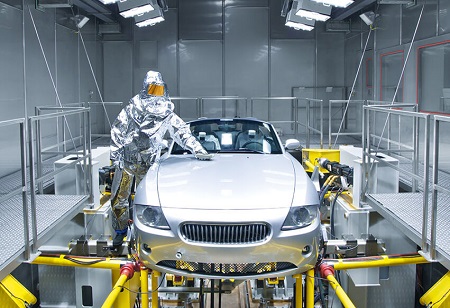It is a well-known fact that
Automotive Industry is a highly competitive and progressive industry all across the globe. To survive in the market for a long period of time, automotive industries need to be constantly innovative in terms of quality, durability, etc. At the same time, the manufacturers of vehicles need to ensure that the system and components of the automobiles must function properly throughout their working life. Traditionally, engineers sit down at a bench with a module connected to a test system whereas now mostly the automotive tests are software based. The global
Automotive Testing market is expected to grow at a CAGR of 5.1 percent during the forecast period 2020-2027.
With the growing rate of innovations in the Automotive Industry, the test engineers are offering best testing solutions according to the fast changing market. “There are new launches and user friendly testing solutions that can be implemented easily for the highly advanced and new technological changes”, says Guenter Butschek, CEO, Tata Motors. Also, there are times when there is a complex testing which needs a highly effective and reliable testing strategy, right from the research and development till the final product is produced then the engineers need to take active and quick decisions instantly.
Data Gathering became More Automated
The widespread adoption of computers changed the scenario, with computer modelling introducing sweeping changes in both the design and testing processes. Automotive Testing became more refined and all manner of scientific measurements are introduced. In the last 4-5 years, vehicles come with a tamper-proof digital identity that differentiates them from other vehicles in the network. This feature enables easy tracking of vehicular data for various use cases such as insurance, driver safety, predictive maintenance and fleet management. Sharing the data of vehicle helps not just the individual customer, but overhauls the entire mobility ecosystem.
Cloud based Services
Automotive testing in the cloud comes with the advantage of low cost, scalability and easy maintenance. With the help of cloud based tools, testers can carry out mobile and web testing in different environments and machines, and that too without setting up infrastructure. Another popular cloud based tool is the Xamarin test cloud. It is a tool that allows testers to write test scripts in C#.
The progress in emissions measurement system has been closely connected to trends in vehicle development. Innovations in automotive technology, stemming from emission regulations and implementation of computer control systems, have especially had great influence on analytical technologies. With the advent of emission regulations, many companies developed their first automotive emission analyser.
Dynamometer Testing
Dynamometer Testing encompasses practically every aspect of a vehicle’s drive train, including transmissions, transaxles, transfer cases, rear axles, U-joints, half-shafts, and complete driveline systems. Innovation on-stand conditioning can induce hot, cold and special environments on any rotating component. It is an unique test which exposes propshafts to hot, cold, salt or sand slurry, torque and speed, all while monitoring the bearing temperatures with infrared cameras.
Electro-Dynamic Vibration
It is a proven fact that driving creates constant vibrations on the vehicle’s frame and components. Vibration Testing puts the car through extremes to ensure durability. During Vibration Testing, ambient movements in the building can contaminate the results, accounting for environmental movement by using high mass bases and air bearing pads. These devices ensure that the results are accurate. Vibration Testing helps in improving component design by identifying weak points when the part gets subjected to random vibrations until failure. Because vibrations occur in all forms of transportation, safety and longevity of parts both rely on being able to withstand constant and erratic movements.
EMI/EMC Testing
Since, all the contemporary vehicles are loaded with electronic components, Electromagnetic Interference (EMI) and Electromagnetic Compatibility (EMC) are critical for ensuring that a vehicle’s electronic systems and sub systems perform optimally in a digitally connected world. There are companies that have massive drive-in chambers at different labs. EMI/EMC related services include Electrostatic Discharge (ESD), radiated immunity, conducted immunity and more.
Mechanical Testing
Automotive Mechanical Tests include examining engine performance and efficiency from a variety of systems. With automobiles that rely on both electrical and mechanical systems running at their peak for the vehicle to continue working, physical operation testing is critical. In Mechanical Testing, companies conduct leak detection, fluid dynamics analysis, stress testing and more. Mechanical Testing ensures that engines meet or exceed the regulatory requirements without sacrificing the performance of vehicles.
The Way Forward
Industry Experts believe that there is a huge gap between the level of testing today, and the level that testing will have to achieve in the near future. Companies are planning to increase their focus on finding the right tools and techniques for testing the vehicles of tomorrow. Right now, companies are not equipped with the technology solutions that they need but are focusing to match up with current trends. For an Advanced Driver Assistance System (ADAS) oriented autonomous vehicles, full regression testing will be absolutely necessary for a system to become certified as being functionally safe.
